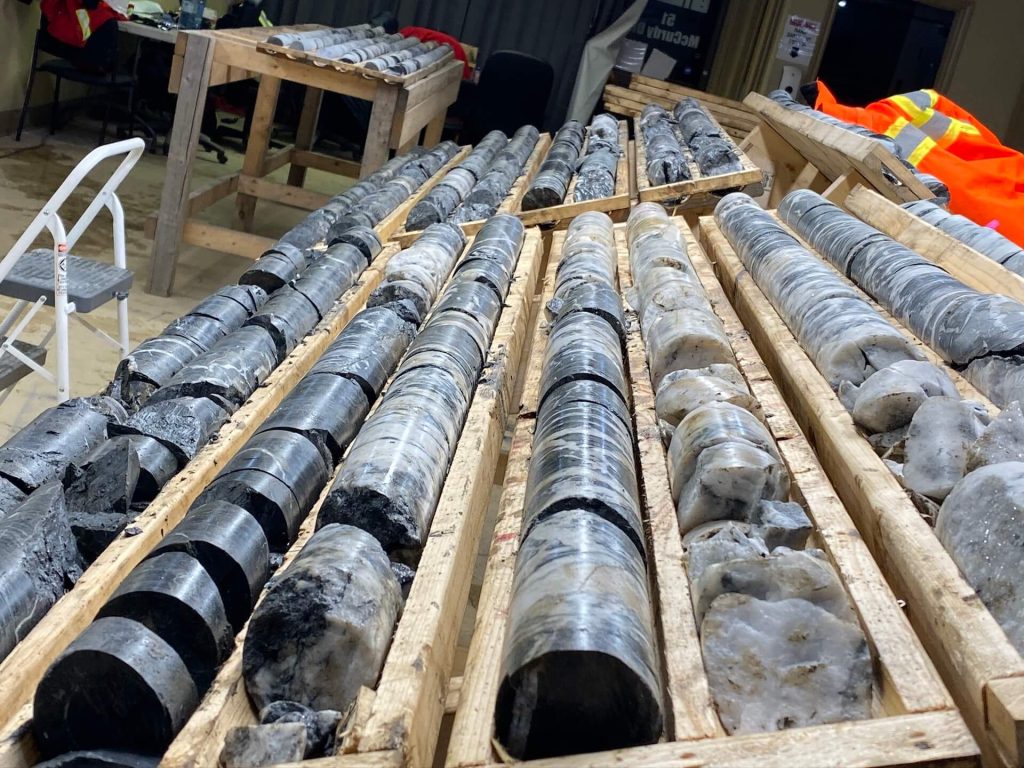New Found Gold drills 300 g/t gold over 5.1 metres at Keats Zone, Queensway Project, Newfoundland

New Found Gold Corp. [TSXV: NFG; NYSE-A: NFGC] reported results of the first phase of channel samples from the Keats Trench and an update on the Iceberg Trench at the Queensway Project located on the Trans-Canada Highway 15km west of Gander, Newfoundland.
True widths are generally estimated to be 70% to 95% of reported intervals. Grades have not been capped in the averaging and intervals are reported as channel length.
Today’s highlight channel intervals include 300 g/t Au over 5.10m, 215 g/t Au over 5.21m, 38.9 g/t Au over 16.60m, 13.4 g/t Au over 26.60m, 10.4 g/t Au over 13.70m, and 27.7 g/t Au over 6.55m, confirming good continuity of high-grade mineralization while comparing well with neighbouring drill holes and demonstrating the broad distribution of gold mineralization in this portion of the Keats Zone.
Prior to trenching and channel sampling, the Keats Zone was fully obscured by overburden and defined entirely by diamond drilling. Exposing the bedrock surface and sampling it at this resolution represents an important step to fully understand the extent, distribution and variability of gold mineralization across this portion of the Keats Zone and provides insights that might apply to other areas of Keats that are not currently exposed or able to be assessed in this way. This new exposure has also enabled validation of the 3D geologic model, which controls, constrains, and dictates the geometries of gold mineralization at Queensway.
The Keats Zone is hosted within the Keats-Baseline Fault Zone (KBFZ), a high-grade gold bearing structure that has been defined over a current strike length of 1.9km averaging 50m wide. It is characterized by a damage zone containing gold-bearing quartz veins that form a network with varying orientations.
The trenched surface gives a complete 2D picture, providing additional understanding of the gold system in the following ways: exposed an approximately 50m by 50m surface expression of the key southwest plunging high-grade corridor within the KBFZ that has been drill defined over a length of over 500m. Detailed mapping has provided an increased understanding of its controls, which will be beneficial for future exploration targeting.
Uncovered veins that were not well constrained by the drilling because of their oblique orientation in relation to the main drill orientation.
Revealed additional peripheral low-grade gold mineralization currently not well represented in drilling and the existing model.
This improved understanding along with the channel gold results are currently being incorporated into the company’s 3D geological model which will extend the gold mineralization to the bedrock surface.
The Phase I channel sampling program was completed over a stripped bedrock surface that is 200m long by 70m wide with a 27-line sampling grid spaced 7.5m apart, covering a total length of 1,782 metres that includes 2,200 individual samples.
A Phase II channel sampling program is ongoing at Keats that is designed to increase the sample density along very high-grade veins to provide more certainty about grade variability of these domains. In addition, the Phase II program aims to better assess vein domains oblique to the systematic grid that were not adequately represented in the Phase I program.
Iceberg Trench Update: A surface trench at the Iceberg Zone was announced July 3, 2024, with a plan to excavate between 1-12 metres of overburden that covers the projection of the Iceberg Zone at the bedrock surface, exposing 220m of strike length over a 105m wide area.
The company is now 80% complete with excavation and plans to undertake a detailed analysis of the geological and structural models currently defined through drilling, as well as a detailed channel sampling program.
Greg Matheson, COO, stated: “Our approach at the Keats Trench has been to systematically test across the entire exposed surface to accurately map the extent of gold mineralization and determine with more certainty the distribution and variability of the gold contained within the mineralized domain. This is the highest density of assay data at Keats obtained to date and we are extremely pleased to see the broad widths of high-grade mineralization carrying across the exposure which is largely in line with modelled mineralization from the drilling program. The assay grade data from the trench is another key component to building our geologic understanding of the mineralization and structural controls at Keats. Given some of the elevated high-grade gold encountered, with many individual samples exceeding 100 g/t and some above 1,000 g/t, the team is now completing a second phase of channel sampling. This Phase II program will include a more targeted assessment of the high-grade components of Keats and cross veins that were not well tested in the first phase.
“Many of the key zones at Queensway extend to the bedrock surface and given some of the sensitivity surrounding these types of systems, it is fortunate that we are able to remove the overburden cover to study these zones in finite terms. We feel that uncovering both Keats and Iceberg will contribute significantly to the understanding of this gold system and future study work.”
The company is currently undertaking a 650,000-metre drill program at Queensway. Approximately 232 metres of channels is currently pending assay results.
New Found holds a 100% interest in the Queensway Project, located 15km west of Gander, Newfoundland and Labrador, and just 18km from Gander International Airport. The project is intersected by the Trans-Canada Highway and has logging roads crosscutting the project, high voltage electric power lines running through the project area, and easy access to a highly skilled workforce. The company is well funded for the program with cash and marketable securities of approximately $45 million as of September 2024.
